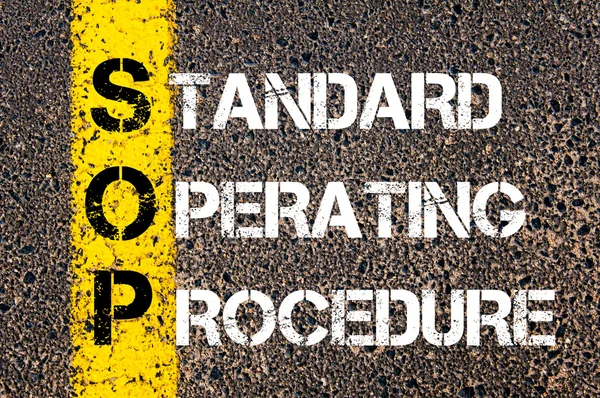
I started in quality assurance back in 2014 and on the first week on the job, my supervisor had me read through a big book of standard operating procedures (SOPs). These SOPs helped me do my job and laid out what was expected of me as an employee. Later when I went on to become a quality manager, I’ve seen some really well written SOPs and then I’ve seen SOPs that look like they were wrangled together right before an audit. I’ve seen what makes a good SOP and a poorly made one. I’ve been both the writer and the reader for SOPs. In my opinion, what really makes an SOP effective is not only how it is written, but how the management team goes about implementing them.
SOPs are essential to any business that wants to scale because it sets clear expectations, creates accountability, and allows you to scale your process as you hire more team members and grow your flight school. Below, you’ll find what I’ve picked up over the years working for Fortune 500 companies and smaller businesses as well. I’ll also provide a link at the end to a downloadable template.
Implementation
Before I dive into the different parts of an SOP, let’s talk about implementation and the end goal. It’s all about creating a management system. Every process that your business has should eventually be backed up by an SOP. Whether it’s switching out a spark plug, cleaning a bathroom, or onboarding a new student pilot; have an SOP to document the process. I reccomend keeping a binder full of the SOPs you create. Consider it your “operations manual”. Eventually, as your flight school grows, you might have a couple of these binders lying around. For example, you might have an administrative binder where you go over how to do front desk work, a maintenance binder to document the correct way of performing maintenance, and a CFI binder where you write out the specific tasks that you want your CFIs to accomplish. The point is to make sure the SOPs are accessible at all times to all relevant employees.
Training
After you create your SOPs, train existing employees on the SOPs. They might already do the job well, but creating or updating an SOP provides another outlet for you as a manager to change behaviors. Use your newly minted SOPs to train new hires and create uniformity among your organization. If an employee starts deviating from procedure, you remind them of the SOP and what’s expected. If they continue to not follow procedure, you then move on to corrective actions like disciplinary action like written warnings to suspension/termination all while being fair and legal.
Your team members should be reviewing the SOP at minimum annually to stay current. You’ll want to keep training records for each time you went over the SOP with your employees so you have documented proof that your employee knows what they’re responsible for. Document all training for CYA purposes. It also makes it formal and professional.
Review
Along with your employees reviewing the SOPs annually, the management team needs to continually review and update the SOPs as the processes in your business changes. Review each procedure annually and on each update, train your team members on the changes.
The Parts
While all SOP structures differ from company to company, most managers have come to agree on the following parts in some shape or form.
Scope
This is where you define the scope of the SOP. Basically, this is a summary of what the SOP is about. Outline the requirements to implement the procedure. Include the reason for the procedure and identify what parts of the company, system, etc. will be involved.
Example: This procedure describes the steps to onboard a new student pilot into CRM and into Flight Schedule Pro. Through following these steps, greater consistency for new student pilot profiles will be made, thus allowing for better KPI tracking and customer experience.
Responsibilities
List the job titles for those responsible for performing, verifying, and owning the procedure.
Example:
-
The office assistant or designee is responsible for entering student information from phone calls, walk-ins, and emails into the CRM.
-
The office assistant or designee is responsible for verifying student information in the CRM that has been automatically imported from the flight school website.
-
The office assistant of designee is responsible for communicating with the student pilot on how to log into Flight Schedule Pro.
-
CFI or designee is responsible for confirming any upcoming flights with the student pilot and updating the office assistant if there are any changes or inaccuracies in the student pilots profile.
-
The operations manager or designee is responsible for ensuring this procedure is followed
Definitions
List out any words, abbreviations, and terms that new employees reading this procedure may have difficulty understanding
Examples:
-
CRM – Customer Resource Management – A type of software that tracks customer data.
-
CFI – Certified Flight Instructor. An FAA certificated pilot that teaches new students how to fly.
-
Flight Schedule Pro – A software suite used to track student information and flight schedules.
Requirements
This is where you write out very detailed steps to describe the requirements to execute this procedure successfully. Use the numbered bullets to group related sections together and when further detail is required, add another decimal bullet under the previous bullet.
Use pictures and screenshots to help guide the reader into understanding exactly how to follow the procedure. The goal should be for you to give your new employees (and employees who are no longer following procedure) this procedure such that they would be able to figure the task out with little to no assistance.
Add sections for corrective action and preventative action. If the procedure is not followed what should be done to fix? List out the requirements to fix the situation.
References
Add references to other procedures, forms, literature, and websites which might help in aiding the understanding of this procedure
Updates
Your SOPs should be a continuously evolving document. Add here the changes that has been made to the SOP. It should follow the following format: When – Who – What – Why
Document Control
The header of your SOP should have a document ID number, when the SOP was created, and when the SOP was last reviewed and updated.
Final Thoughts
You most likely already have SOPs but they may have not been formalized like what I am suggesting. Convert your “cheat sheets” into formal SOPs using our free SOP template.

Content contributed by:
Tim Jedrek
Tim Jedrek is a passionate aviator, author, entrepreneur, and digital marketing expert dedicated to helping flight schools grow and scale their aviation businesses. As the founder of Right Rudder Mark...
View Profile

